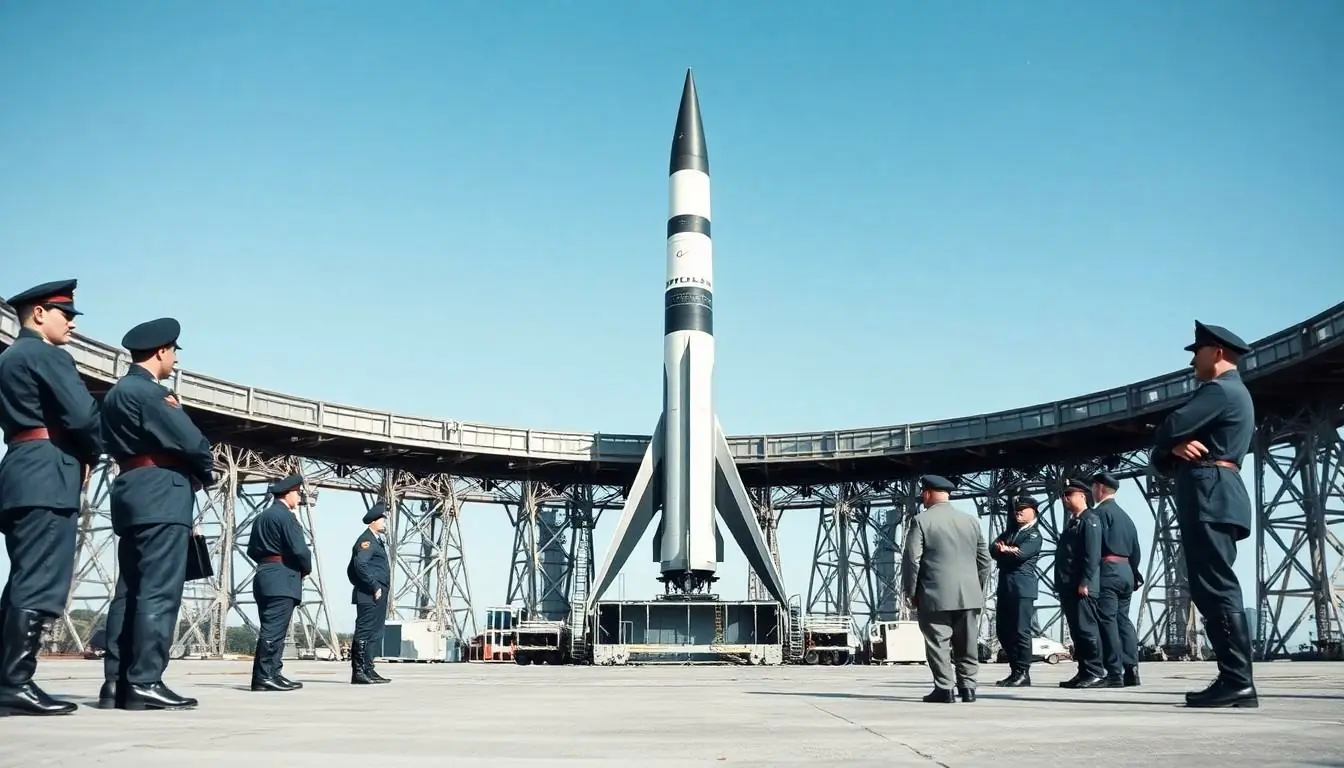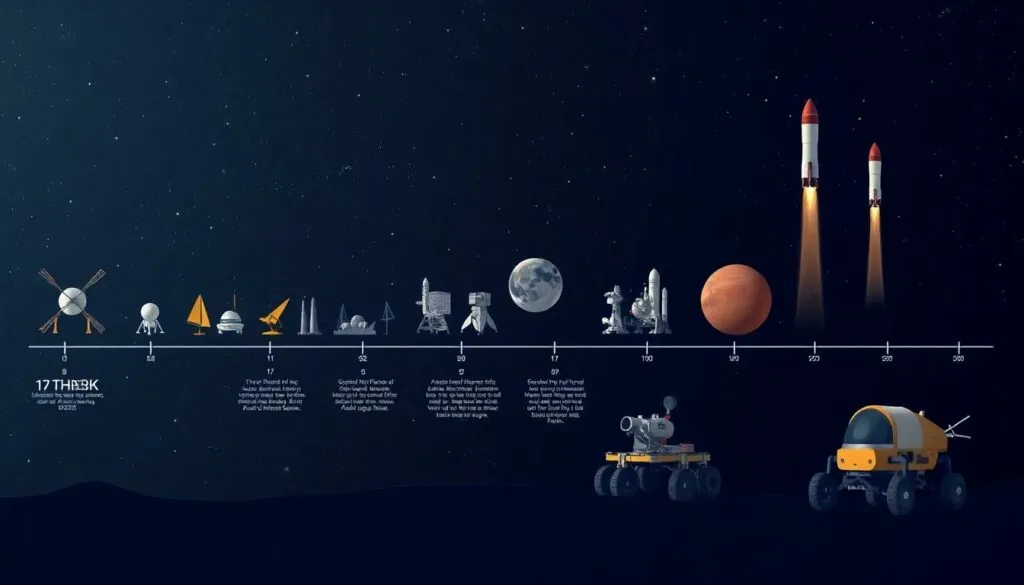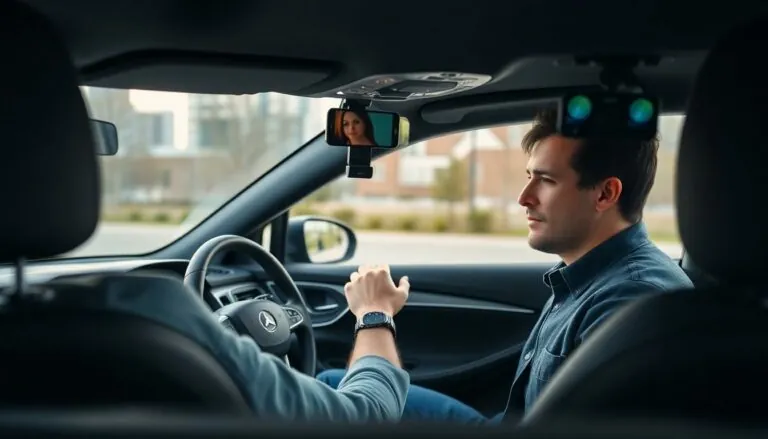Table of Contents
ToggleFrom the moment humans first gazed at the stars, the cosmos has sparked curiosity and ambition. Fast forward to today, and space technology has leaped from mere dreams into groundbreaking realities. Who would’ve thought that a bunch of scientists in lab coats could launch a tin can into orbit and send humans to the Moon? It’s like a sci-fi movie, but with fewer aliens and more math.
This journey through the space technology timeline reveals the incredible milestones that have shaped our understanding of the universe. Each breakthrough, whether it’s launching the first satellite or landing rovers on Mars, is a testament to human ingenuity. Buckle up as we explore how these advancements have turned space exploration into an exciting adventure, making us all feel just a little bit closer to the stars.
Overview of Space Technology
Space technology encompasses various tools, systems, and methods that enable exploration and utilization of outer space. Pioneering efforts date back to the mid-20th century, when the United States and the Soviet Union began launching artificial satellites. Notable among these was Sputnik, the first human-made satellite, launched in 1957, which sparked global interest in space research.
Significant advancements followed with the introduction of human spaceflight. In 1961, Yuri Gagarin became the first person to orbit Earth, setting a benchmark for future missions. The success of missions like Apollo 11 in 1969, which landed humans on the Moon, exemplified human capability in space travel.
Development of space probes expanded our knowledge of distant celestial bodies. Probes like Voyager 1 and Voyager 2, launched in 1977, provided invaluable data on the outer planets and now continue their journey through interstellar space. Missions to Mars, including rovers like Spirit, Opportunity, and Curiosity, further illustrated human ambition to explore other planets.
Satellite technology also revolutionized communications and navigation on Earth. The deployment of GPS satellites transformed how people navigate geographically, enhancing precision in various sectors such as transportation and agriculture. Additionally, satellites monitor climate changes, natural disasters, and even support scientific research.
Emerging technologies, including reusable rockets, are reshaping the future of space missions. Companies like SpaceX have pioneered systems that reduce launch costs and increase access to space. Innovations in propulsion and robotics continue to expand possibilities for exploring deeper into the solar system.
Overall, space technology continues evolving, driven by exploration and scientific discoveries. Understanding this evolution offers insights into humanity’s aspirations and challenges in the cosmos.
Early Developments in Space Exploration

Significant advancements occurred in the early years of space exploration. These milestones laid the groundwork for future achievements.
The V-2 Rocket
Developed by Germany during World War II, the V-2 rocket marked the first human-made object to reach the edge of space. This ballistic missile reached an altitude of 189 kilometers during its flight in 1944. Engineers like Wernher von Braun played crucial roles in its creation, combining sophisticated engineering with innovative designs. The V-2 demonstrated the potential of rocket technology for space exploration and prompted interest in its applications beyond military uses.
The Cold War Era
The Cold War triggered a fierce competition in space exploration between the United States and the Soviet Union. Launching Sputnik 1 in 1957, the Soviet Union became the first nation to send a satellite into orbit. This prompted the U.S. to accelerate its space program, leading to the establishment of NASA in 1958. The ensuing space race fueled technological advancements, including human spaceflight, satellite communications, and scientific research. The efforts during this period highlighted the strategic importance of space in global politics and inspired generations to dream about the possibilities beyond Earth.
Major Milestones in Space Technology
Significant advancements have shaped space technology over the decades. Key moments stand out in the timeline of exploration and innovation.
Launch of Sputnik
The launch of Sputnik on October 4, 1957, marked a pivotal moment in space history. It became the first artificial satellite in orbit around Earth. This achievement by the Soviet Union sparked the Space Race, igniting global interest in space exploration. Sputnik’s beeping signals showcased the potential for satellite communications. Nations recognized the capability of satellites for monitoring and research, leading to the development of future technologies in various fields.
Apollo Missions
The Apollo missions represent a cornerstone of human space exploration. Apollo 11, which landed on the Moon on July 20, 1969, achieved the remarkable feat of placing humans on another celestial body. Neil Armstrong and Buzz Aldrin became the first astronauts to walk on the lunar surface. These missions not only advanced scientific understanding but also united people worldwide through a shared sense of achievement. The journey paved the way for future exploration efforts, including Mars rovers and deep-space missions, transforming humanity’s aspirations for space exploration.
The Space Shuttle Era
The Space Shuttle Era significantly advanced space exploration from 1981 to 2011. This program created new opportunities for scientific research, technology development, and international cooperation in space.
Key Missions and Technologies
NASA’s Space Shuttle program included critical missions like STS-1, the first shuttle flight, launching on April 12, 1981. Innovations such as the solid rocket boosters and the external fuel tank allowed for reusable spacecraft. Shuttle missions also delivered modules to the International Space Station, enhancing human presence in low Earth orbit. Notable flights included the deployment of the Hubble Space Telescope in 1990, revolutionizing astronomical observations. This program also pioneered advancements in materials science and robotics, contributing significantly to the field.
Contributions to Science
The Space Shuttle facilitated groundbreaking scientific experiments across various disciplines. Microgravity conditions helped researchers study fluid dynamics, combustion, and plant growth, yielding valuable insights relevant to Earth. High-profile missions enabled the assembly and maintenance of the Hubble Space Telescope, enhancing our understanding of the universe. Research conducted aboard the shuttles contributed to advancements in medicine, telecommunications, and environmental science, providing tools to address challenges on Earth. These contributions demonstrated the importance of human spaceflight in expanding scientific knowledge.
Recent Advancements in Space Technology
Recent advancements in space technology continue to push the boundaries of exploration and innovation. These developments significantly impact both scientific understanding and commercial opportunities.
Mars Rovers
Mars rovers have revolutionized planetary exploration, with the Perseverance rover landing on Mars in February 2021. Equipped with advanced scientific instruments, it searches for signs of ancient microbial life and collects samples for future return missions. The Ingenuity helicopter, part of the Perseverance mission, demonstrated powered flight in Mars’ atmosphere for the first time, showcasing new possibilities for aerial exploration. Rovers like Curiosity and Perseverance have gathered invaluable data on Martian geology and climate, advancing knowledge about our neighboring planet.
Commercial Space Travel
Commercial space travel has gained significant momentum, with companies like SpaceX and Blue Origin leading the charge. SpaceX’s Crew Dragon spacecraft successfully ferries astronauts to the International Space Station (ISS), marking a historic shift towards private spaceflight. Blue Origin focuses on suborbital tourism, offering civilians brief experiences of weightlessness. Recent developments in reusable rocket technology reduce costs and enhance mission capabilities. As regulations continue to evolve, more private enterprises are likely to enter the space tourism industry, making space more accessible to the public.
The timeline of space technology showcases humanity’s relentless pursuit of knowledge and exploration. Each milestone reflects not just technological advancements but also a collective dream to understand the universe. From the early days of the V-2 rocket to the groundbreaking missions of the Space Shuttle and the recent achievements in Mars exploration, these developments have transformed how people view their place in the cosmos.
As new players enter the field and innovation continues to thrive, the future of space exploration looks promising. The ongoing efforts in commercial space travel and reusable rocket technology are set to democratize access to space, inviting everyone to be part of this extraordinary journey. The story of space technology is far from over, and the next chapters are bound to inspire generations to come.




